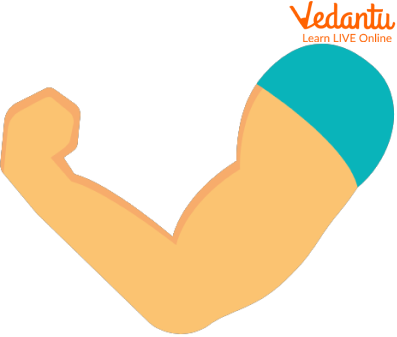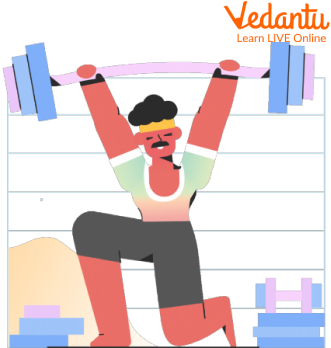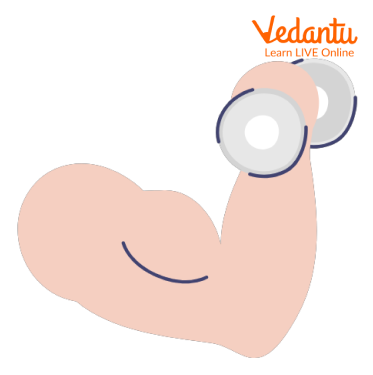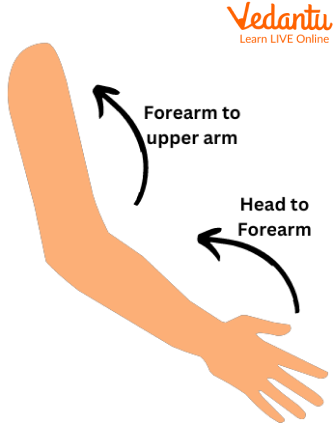




An Overview of Arm
A particular human upper limb: the area between the shoulder and wrist, something resembling an arm, such as a vertebrate animal's forelimb or an invertebrate animal's limb is the arm. There are three parts to it: the upper arm, forearm, and hand. It has 30 bones and stretches from the shoulder to the tips of the fingers. It also has numerous muscles, arteries, and veins, as well as nerves. Since we now know what an arm is, we should also be aware of its uses and functions. Don’t worry, these are discussed in the article below, let’s have a look.

Arm
Uses of Arms
Your arm muscles can assist you with small, exact motions (fine motor skills), like wiggling your fingers or fastening a button. Additionally, they let you make large actions like pushing yourself up or extending your arms above your head or straightening your elbow. Your arm has some muscles that are deeply embedded. They have a vast range of abilities, including the ability to touch, grip, feel, hold, manipulate, caress, and more. They play a crucial role in our identity and how we view ourselves. Arms have a very important role in our lives. We are able to grab things, why? Because we have arms. We are able to pick and throw things, why? Because we have arms. We do almost all basic chores with our arms. Arms are very crucial in our lives.

Uses of Arms
Function of Arms
Manipulation is the process through which humans manipulate other items using their arms and hands. The hand's primary function is to grab things. Other primates use their arms to walk along the ground or cling to trees to support themselves as they move about. They serve as a framework for the lymphatics, muscles, blood arteries, and nerves. The humerus is the only bone in the area of the upper arm. The two bones that make up the forearm are the radius and ulna. These two bones, the muscles and the nerves in our arms make the arm as a whole which has a very important role in supporting the lives of humans.

Arm’s Function
Which Three Components Make Up the Arm
The upper body's functional unit is the upper extremity or the Arm. There are three parts to it: the upper arm, forearm, and hand. It has 30 bones and stretches from the shoulder to the tips of the fingers. The upper limbs of the body are the arms. They are among the most intricate and utilised bodily parts.
There are four main components to each arm:
Upper arm
Forearm
Hand

Three Components Make Up the Arm
Summary
To conclude all the conceptual understanding regarding the Arm in this article, we can say that the upper body's functional unit is the upper extremity or the arm. There are three parts to it: the upper arm, forearm, and hand. It has 30 bones and stretches from the shoulder to the tips of the fingers. It also has numerous muscles, arteries, and veins, as well as nerves. We hope you enjoyed reading this article, in case of any other doubts, feel free to ask in the comments.
FAQs on Function of Arm
1. How does the arm join the body?
The scapula features a joint called the acromion that curves around from the rear to the front of the shoulder. The only actual joint connecting the arm to the body is the acromion, which is the portion of the scapula that joins to the collarbone. The only actual joint connecting the arm to the body is the acromion, which is the portion of the scapula that joins to the collarbone.
2. What movement does the arm make?
The muscles in the anterior compartment's primary role are the bending of the forearm at the elbow and the abduction of the arm at the shoulder. These muscles also have the ability to flex the arm at the shoulder and supinate the forearm.
Flexing the arm.
Arms extended.
Arm encirclement.
Adducting the arm.
Internal arm rotation (medial rotation).
3. Why can we move in any direction with our arms?
Muscles can pull on bones, but they are unable to push them back into position. Flexors and extensors cooperate in pairs as a result. To bend the limb, a flexor joint contract. Once the movement is complete, the flexor relaxes and the extensor contracts, allowing the limb to be extended or straightened at the same joint. We can move our arms in a number of ways thanks to our shoulders. A ball and socket joint are one of the different types of joints.









